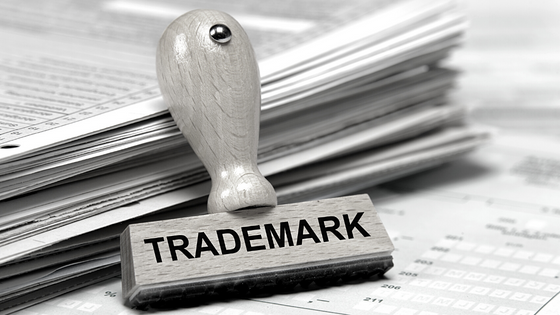It depends on what you mean by “own” – but if you mean that you have exclusive rights to the name and can prevent competitors from using it – no, not really.
Trade marks vs other names
A trade mark registration is the only way to own a name in this sense. It is your property that you can own and sell or license to others. If someone infringes your trade mark, you can send a letter of demand (cease and desist) to require them to stop and, if necessary, sue them for trade mark infringement.

You have to give a name to your company, even if it is just ACN 123456789 Pty Ltd. If you trade under a name that is not your legal name, or the full name of your company (including the Pty Ltd), you are legally required to register a business name. But company and business names do not give you any rights to the name. They are not meant to. Rather, the companies and business name registers are searchable databases designed to let people identify who is running a business (see ASIC Connect).
Domain names and social media handles are important ways to identify your business, but, of themselves, they give you no protection.
If your business uses a company, business, domain or social media name that infringes a registered trade mark, a Court can order your business to change its name.
Passing off
If you develop a reputation in your name or the name of your products, you may be able to sue an infringer for “passing off” and misleading or deceptive conduct – arguing that the infringer is passing off its goods and services as yours or otherwise representing that it is connected with your business. However, these claims can be difficult to prove because:
- You need to prove your reputation – so they will not protect unused marks;
- You need to prove your reputation where the other party is active – if you have a reputation only in Victoria but the other party only trades in New South Wales, you will not be protected;
- The whole of your conduct and get-up is compared to the whole of the other party’s conduct and get-up – so that if they use a similar name but consumers would not be misled into believing that they were connected with you, you are not protected.
Benefits of trade mark registration
By contrast, trade mark registration:
- Normally covers the whole of Australia;
- Acts like a silent cop – businesses who search the Trade Marks Register and see your mark will be warned off using a similar mark for similar goods or services;
- You do not need to prove your reputation in an infringement claim; and
- Generally, only the infringing mark is compared to your registered mark – it does not normally matter that the infringer disclaims any connection to your business or has a different branding.
Is your mark registrable?
However, trade mark registration is not as simple as a company or business name registration. A trade mark application will usually be rejected if:
- It is too similar to a mark that is already on the Trade Marks Register for similar goods or services;
- It is too descriptive of the products or is a term of praise for the products, eg AWESOME ELECTRONICS;
- It uses a common name or a geographic term eg SHANE’S PLUMBING or MELBOURNE CITY CARS.
How to file a trade mark application
You can file the application yourself for your business. If you self-file and your company carries on the business, it is best to file the application in the company name. Alternatively, you can use a lawyer or trade marks attorney to take care of everything. You should make sure that they are experienced in filing trade mark applications.
There are two ways to file a trade mark application:
- a standard application; and
- a Headstart application.
For a self-filer, a Headstart application is best because receives a pre-assessment by a Trade Marks Examiner. The Government fee for a Headstart application is in two parts. You pay the first part upon filing. You will then receive a report which tells you if the Examiner has found any problems with your application.
It is possible to amend a Headstart application at this stage in light of the Examiner’s comments. If everything is OK, you pay the second part of the Headstart fee and the application is officially filed.
A standard application is slightly cheaper than a Headstart application and may be appropriate if your business has used the trade mark for a long time.
Trade mark application procedures
Regardless of what type of application you file, your trade mark application will be examined by a Trade Marks Examiner to see if it is registrable and meets formal requirements. If there are no problems with your application, the Trade Marks Office will advise you that your application is accepted. The soonest a trade mark can be registered is 7.5 months after filing.
If there are problems, you have 15 months (extendible by up to a further six months) to get your application accepted. A lawyer or trade marks attorney can advise on the best way forward. This may involve filing declarations evidencing the use of the trade mark.
Trade marks are registered for 10 years at a time and must be renewed each 10 years or they will lapse. A registered trade mark is a valuable right of your business and should be renewed if it is still used.
This article provides general information only and is not intended as legal advice specific to your circumstances. Please seek the advice of a legal professional or trade marks attorney if you have any particular questions.




















